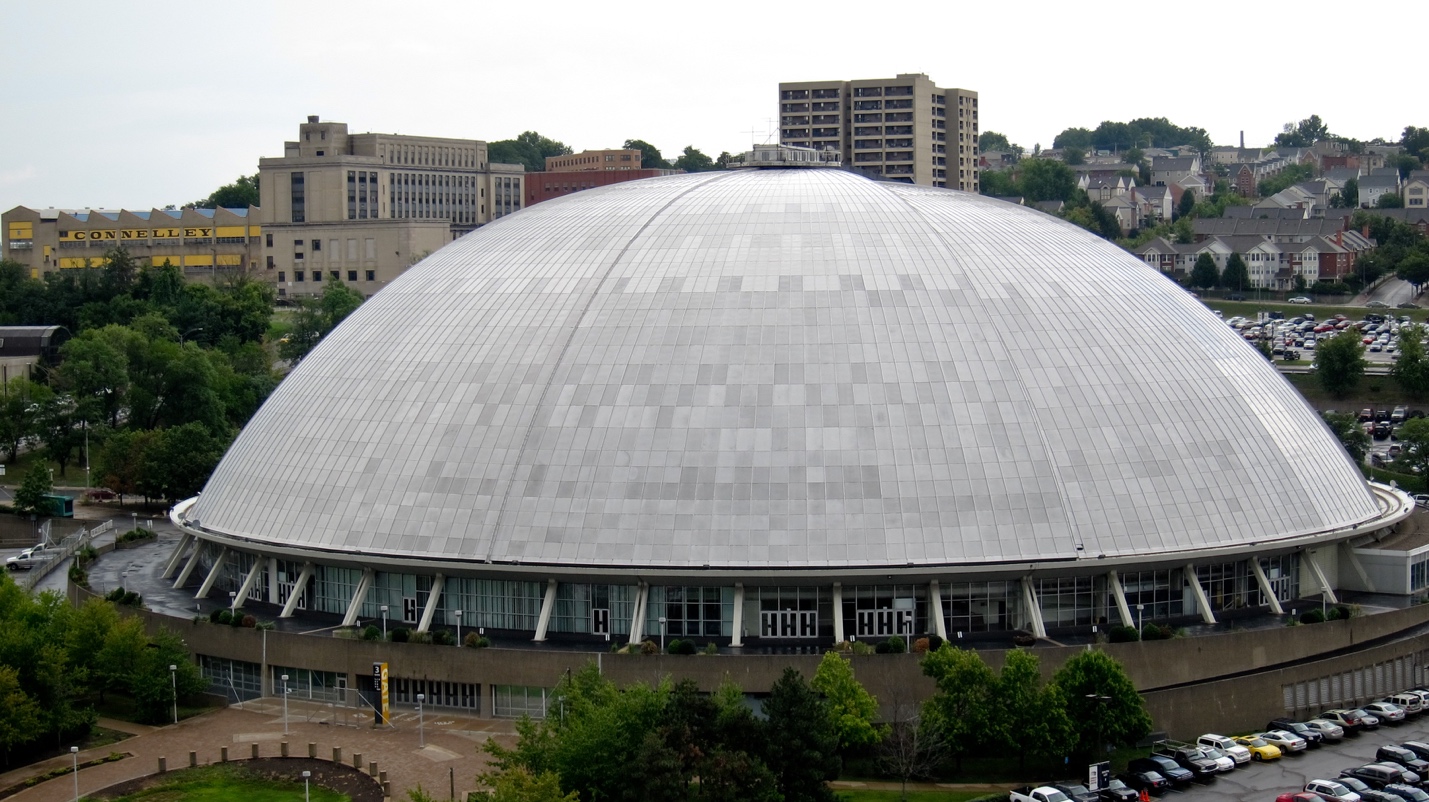
Civic Arena
Pittsburgh Civic Arena, later Mellon Arena, was the first home of the Pittsburgh Penguins when they joined the NHL as an expansion team in 1967. An enormous dome in the Lower Hill District of downtown Pittsburgh, Civic Arena, by virtue of its shape and intimidating appearance, was known to Penguins fans as the Igloo. With architectural features that were unique at the time, Civic Arena afforded hockey fans an excellent view of the action wherever they were sitting. The Penguins called the Igloo home until the arena closed in 2010.
Pittsburgh’s Civic Arena — History and Architecture
Civic Arena, like most past and present NHL venues, was a multipurpose venue that hosted concerts, political rallies, sporting events and more. The original main purpose of Civic Arena was not hockey; it was another activity that also featured drama, excitement and occasional violent clashes — opera.
In the 1950s, Pittsburgh Civic Light Opera (CLO) was playing outdoors at the University of Pittsburgh football stadium. Desiring more hospitable playing conditions and fewer rainouts, Pittsburgh’s city leaders put together a plan for an indoor-outdoor amphitheater. In 1958, construction began: 40 months and $22 million later, Civic Arena was open for business.
One of the first tenants in the new arena was the AHL Pittsburgh Hornets, who played there from the arena’s opening in 1961 until 1967. Hornets fans nicknamed the arena the Igloo, and the name stuck so well it inspired the name “Penguins” when Pittsburgh was awarded an NHL expansion franchise.
Architecturally, Civic Arena had several interesting features:
- It was the first major indoor arena with an almost fully retractable roof — six of its eight roof sections could be folded within 2.5 minutes.
- Civic Arena was made primarily from (what else?) steel — about 3,000 tons of it, all from Pittsburgh steel manufacturers, of course.
- With its retractable roof, Civic Arena (which was renamed Mellon Arena in 1999) had no interior support beams to block the view from the stands. This was a big plus for Penguins fans, who didn’t miss a bit of action at home games.
The indoor-outdoor concept didn’t work out so well for CLO. Compromises in the interior design to accommodate seating and surfaces for sporting events made the setup less than ideal for concert acoustics and staging. With the opera company unable to attract top acts, it moved to Heinz Hall in 1969, making the Penguins Civic Arena’s anchor tenant.
Civic Arena/Mellon Arena — Pittsburgh Penguin Memories
- When the Penguins played their first game in Civic Arena in 1967, the most expensive ticket in the house was (get ready) $5. Pittsburgh lost the game to the Montreal Canadiens 2-1.
- In 1990, Civic Arena hosted the NHL All-Star Game, and Pens fans got a real treat: Mario Lemieux scored three goals on his first three shots. He ended the game with four goals, and not surprisingly was MVP.
- In 1991, Civic Arena hosted its first Stanley Cup Final game, with the Penguins falling to the Minnesota North Stars 5-4. The Pens prevailed and won the Cup, however, capturing the series 4-2 in Minnesota.
- In 1997, the arena’s address was changed from 300 Auditorium Place to 66 Mario Lemieux Place.
- Mellon Financial Corp. had naming rights for the Igloo from 1999 to 2010. When its contract expired, the name once again became Civic Arena, but not for long.
- Jordan Staal scored the last Penguins goal in Civic Arena against the Canadiens in a Stanley Cup conference semifinal game in 2010. It wasn’t enough — Montreal won 5-2.
With power outages and other structural problems, Civic Arena was no longer a venue suitable for the Penguins. In addition to physical issues with the Igloo, its hockey seating capacity was small, at about 12,500. The Igloo closed in 2010 and the Pens moved to PPG Paints Arena (originally Consol Energy Center). The new stadium was a project spearheaded by none other than Penguins super-legend Mario Lemieux.
(Image Credit – Wikimedia Commons)
